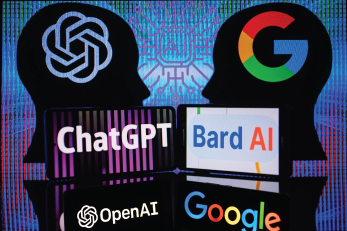Introduction
Robotics has emerged as one of the most transformative fields of modern technology. It encompasses a dynamic combination of engineering disciplines, computer science, and artificial intelligence (AI) to create machines capable of performing complex tasks. Whether you are a hobbyist, a student, or a seasoned engineer, understanding the intricacies of robot design, systems engineering, and task analysis is essential to staying ahead in this rapidly evolving domain. This pillar post will provide you with a comprehensive guide to mastering these foundational principles and integrating cutting-edge AI/ML techniques to enhance robot functionality.
Part 1: A Holistic Approach to Robot Design, Systems Engineering, and Task Analysis
1.1. Fundamentals of Robot Design
Robot design begins with defining the purpose of the robot. Whether the robot is intended for manufacturing, healthcare, exploration, or entertainment, its functionality will dictate its design.
Key Design Considerations:
- Form Factor: Choose a physical structure suitable for the task, such as humanoid, wheeled, or aerial.
- Material Selection: Consider weight, durability, and flexibility.
- Power Systems: Design efficient energy solutions (e.g., batteries, solar panels).
- Sensors and Actuators: Integrate components for perception and interaction.
Design Process:
- Define objectives and constraints.
- Create conceptual sketches.
- Use CAD tools for detailed design.
- Build and test prototypes iteratively.
1.2. Principles of Systems Engineering
Systems engineering ensures the integration of all components within the robot to operate seamlessly.
Core Practices:
- Requirements Analysis: Clearly outline functional and non-functional requirements.
- System Architecture: Develop a high-level blueprint showing interactions between hardware and software.
- Subsystem Integration: Coordinate the mechanical, electrical, and computational elements.
- Testing and Validation: Use simulations and real-world tests to identify and address performance issues.
1.3. Task Analysis for Robotics
Task analysis involves understanding and decomposing the tasks the robot needs to perform.
Steps in Task Analysis:
- Identify the overall goal (e.g., “Navigate a warehouse to pick and place objects”).
- Break the goal into subtasks (e.g., “Detect objects,” “Pick up objects,” “Navigate to location”).
- Assign priorities and dependencies.
- Map tasks to robot capabilities.
Tools for Task Analysis:
- Workflow diagrams
- Task trees
- Simulation environments
Part 2: Using AI/ML Techniques for Object Detection and Navigation
2.1. Detecting and Manipulating Objects
AI and machine learning (ML) have revolutionized object detection, enabling robots to perceive their surroundings with remarkable accuracy.
Key Techniques:
- Computer Vision: Use cameras and depth sensors for visual input. Employ ML models like convolutional neural networks (CNNs) for feature extraction and object recognition.
- Grasp Planning: Implement algorithms to determine optimal grip points using data from sensors.
- Reinforcement Learning: Train the robot to improve object manipulation through trial and error.
Popular Tools and Frameworks:
- OpenCV (for image processing)
- TensorFlow/Keras (for building and training ML models)
- ROS (Robot Operating System) for integration
2.2. Navigating Robots Using Landmarks
Navigation is a fundamental skill for mobile robots, and using landmarks simplifies the process.
Approaches to Navigation:
- Simultaneous Localization and Mapping (SLAM): Build a map of the environment while tracking the robot’s position.
- Landmark Recognition: Use visual or physical markers to guide navigation.
- Path Planning Algorithms: Leverage techniques like A* or Dijkstra’s algorithm for efficient route planning.
Key Challenges:
- Dynamic environments with moving obstacles.
- Variability in lighting and other environmental conditions.
Solutions:
- Train ML models to recognize landmarks under diverse conditions.
- Employ LIDAR or ultrasonic sensors to complement visual inputs.
Part 3: Integrating Voice and Natural Language Interactions
3.1. Building a Digital Assistant for Your Robot
Voice interfaces make robots more accessible and intuitive. Building a digital assistant involves integrating speech recognition, natural language processing (NLP), and conversational AI.
Key Components:
- Speech-to-Text (STT): Convert spoken language into text using APIs like Google Speech-to-Text or open-source libraries like Mozilla DeepSpeech.
- Natural Language Understanding (NLU): Analyze the intent behind user input using frameworks like Rasa or Dialogflow.
- Text-to-Speech (TTS): Generate audio responses with lifelike intonation using tools like Amazon Polly or Microsoft Azure Cognitive Services.
Implementation Steps:
- Set up a microphone and speaker for hardware input/output.
- Use an STT service to capture and process spoken commands.
- Analyze commands with NLU to extract actionable intents.
- Generate appropriate responses using a TTS engine.
3.2. Creating an Artificial Personality
Giving your robot a personality enhances user engagement and provides a more natural interaction experience.
Design Considerations:
- Tone and Style: Decide if the robot should sound formal, casual, humorous, etc.
- Behavioral Consistency: Ensure responses align with the chosen personality.
- Custom Voice: Create unique voices using voice synthesis tools.
Practical Applications:
- Customer service robots with empathetic tones.
- Educational robots with enthusiastic and encouraging personalities.
Challenges and Solutions:
- Challenge: Overly robotic or monotone voices can reduce user satisfaction.
- Solution: Use advanced TTS models that mimic human speech nuances.
- Challenge: Misunderstanding user commands.
- Solution: Implement fallback mechanisms to ask clarifying questions.
Part 4: Bringing It All Together
4.1. Case Study: A Warehouse Assistant Robot
Imagine designing a robot to assist in a warehouse environment. Here’s how the concepts covered can be applied:
- Design and Engineering:
- Equip the robot with a sturdy base for mobility, a robotic arm for picking objects, and sensors for perception.
- Task Analysis:
- Tasks include identifying items, navigating to their locations, and transporting them to designated areas.
- AI/ML Integration:
- Use computer vision to identify items.
- Apply SLAM for navigation.
- Train reinforcement learning models for improved object handling.
- Voice Interaction:
- Integrate a digital assistant to take voice commands, such as “Retrieve box A from shelf 3.”
- Add personality traits to make the interaction engaging.
4.2. Future Trends in Robotics
- Edge AI: Enable robots to process data locally for faster decision-making.
- Collaborative Robots (Cobots): Build robots designed to work safely alongside humans.
- Ethical AI: Develop guidelines for responsible and fair robot behavior.
Conclusion
Building advanced robots involves a harmonious blend of design, engineering, and cutting-edge AI techniques. By mastering these skills, you can create robots capable of performing complex tasks, interacting naturally with humans, and adapting to dynamic environments. Whether your goal is academic exploration, industrial innovation, or personal curiosity, the roadmap provided in this guide will set you on the path to success in the fascinating world of robotics.


